Recently Two new species and one new genus on Darwin wasps were founded described by Prof. Alexey Reshchikov from Institute of Eastern-Himalaya Biodiversity Research, Dali University, and all of these discoveries were published in three papers.
In collaboration with the SCAU colleagues we discovered two new species of the genus Drepanoctonus Pfankuch, 1911 collected in natural habitats with Wild Tea (Camellia sinensis var. assamica). The species were described and illustrated: D. rimdahli from Chiang Mai Provinceb of Thailand and D. chamagudao from Yunnan Province of China. Another species Drepanoctonus bicolor Kusigemati, 1971 is recorded from China for the first time. These Darwin Wasps name derives from one of the earliest known host, Watsonalla binaria (Hufnagel, 1767) (Lepidoptera, Drepanidae), formerly named Drepana binaria, and literally means “the killer of Drepana”. Today only W. binaria is known as reliable host records. The other host records of the genus are only literally reported by some authors without any reliable evidence.
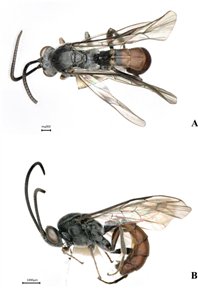
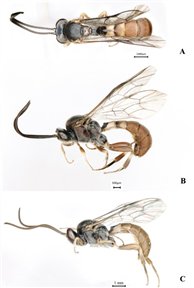
Drepanoctonus chamagudao Drepanoctonus rimdahli
These discoveries are important part of our sampling efforts at Dali University at tea the gardens. Read more in Liu et al. 2021: https://jhr.pensoft.net/article/66400/
Second paper was published in collaboration with National University of Mayor de San Marcos, Ecuador about two new species of Exetastes Gravenhorst, 1829 from the Peruvian Andes. Two species are described and illustrated, E. andensis and E. tullu. The Peruvian Andes are one of the regions where Darwin wasps are least studied and may include numerous species of Exetastes.
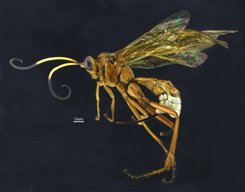
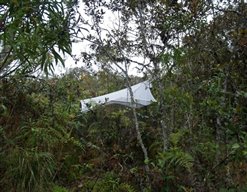
Exetastes andensis Malaise trap at 3500m elevation in Peru
Our discoveries are the first records of the genus in Peru and the Andean region and important for our research direction at the IEHBR on altitude gradient in North Western Yunnan high mountain systems.
Read more https://europeanjournaloftaxonomy.eu/index.php/ejt/article/view/1701
In third paper, we discovered new genus of Darwin Wasps from Northern Thailand! Rhytidaphora Reshchikov & Quicken 2022, type species Rh. thailandica Reshchikov & Quicken 2022, belongs to the tribe Euryproctini. The tribe is recovered spread across the tree in five separate clades but with low support, however, nine of the euryproctine genera formed a monophyletic grouping including Rhytidaphora and is hence consistent with the placement based on our morphological assessment. We found this wasp in Malaise trap samples from Chae Son (Lampang Province) and Doi Phu Kha (Nan Province).
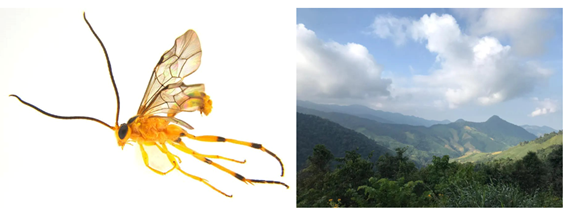
Rhytidaphora and its habitat
It is difficult to say anything particular about Darwin Wasps biogeography since we know almost nothing on their distribution, however two localities are about 250 km distant, on elevations 500 and 1100 m a.s.l. Chae Son belongs to the Khun Tan Range, and it was hot springs next to the sample site. Doi Phu Kha belongs to the Luang Prabang Range. Between these two Rhytidaphora localities the Phi Pan Nam Mountains lie, and the rivers Wang, Yom, and Nan flowing southward (Chaopraya watershed), the rivers Lao and Ing northward (Mekong watershed). Unfortunately, nothing is known about the biology of the newly described wasp. Species of Syndipnus have a similar structure of T2 and T3 and attack free living nematine sawflies. Thus, could we expect similar biology in Rhytidaphora? Some examined species of Synomelix also have a rather thin and short ovipositor, similar to the ovipositor in the new genus. Some species of the perilissine genus Lathrolestes Förster, 1869, which attack Heterarthrinae also display this trend.

